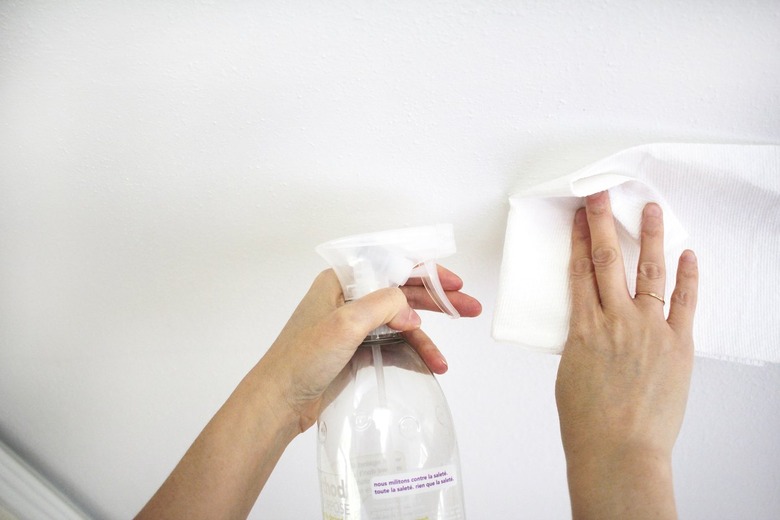How To Get Paint Off The Ceiling
We may receive a commission on purchases made from links.
Painting is one of the simplest and most cost-effective ways to update the look and feel of a room in your home. While painting can seem like an easy task, even the smallest mistake can detract from the fresh, new look you're going for. If you accidentally got paint on your ceiling, you'll be able to clean it off and touch it up whether it's still fresh or has already dried.
How to Remove Wet Paint From the Ceiling
How to Remove Wet Paint From the Ceiling
If you're still in the middle of your paint job and the paint spot on your ceiling has not yet dried, simply grab a damp cloth and gently dab at the spot until most of the paint has been soaked up by the cloth. Once the bulk of the paint has been removed, rinse your cloth or grab another damp cloth and gently wipe any remaining paint until the spot is completely gone.
How to Remove Dried Paint From the Ceiling
How to Remove Dried Paint From the Ceiling
If the paint you want to remove has already dried, you'll have to work a little harder to get your ceiling back into pristine shape. The first thing you'll need to do is prepare yourself and your work space with safety in mind since you'll be using a chemical paint remover.
1. Ventilate the Space and Put on Safety Gear
To keep the paint-removal process safe, you'll want to open the windows and turn on a fan to increase airflow in the room. You'll also want to put on chemical-resistant gloves and safety goggles.
2. Apply Paint Remover
Once you're ready to begin, apply a few drops of paint remover to a clean, dry cloth. Blot and wipe the unwanted paint spot, pausing every 10 to 15 seconds to check your progress. Stop blotting when the spot has disappeared. If the spot remains after two to three minutes of diligent blotting and wiping, you'll need to move to the next step.
3. Break Out the Paint Stripper
If a gentler paint remover doesn't do the trick, you'll need to give paint stripper a try. To use paint stripper, dip a paintbrush in the stripper and brush it over the entire spot you want to remove. Use enough paint stripper for the spot to appear wet but not so much that it pools or drips. Most paint strippers need time to work, so step away for 20 to 30 minutes while it softens the paint.
4. Scrape It Away
Use a clean putty knife to gently scrape the paint off your ceiling. Work from the outer edges of the paint spot and gently chip inward to avoid damaging the underlying ceiling. You may have to add more paint stripper and repeat this step several times if the spot is large or the paint is particularly thick.
5. Use Trisodium Phosphate to Remove Any Residue
After removing your softened paint spot with a plastic putty knife, you might find that there is a little bit of paint stripper residue left behind. You can use trisodium phosphate (TSP) diluted in water to remove any remaining paint stripper residue. All you'll need to do is dissolve 1 tablespoon TSP into a 1 quart of hot water, dampen a rag, and then gently work it across the area with visible residue. Rinse the treated area with clean, warm water.
Warning
When handling TSP, always read and follow the manufacturer's dilution directions and wear safety goggles, chemical-resistant gloves, and a long-sleeved shirt.
6. Do a Final Touch-Up
If your ceiling looks as good as new once you've removed the paint spot, you're all done. If the underlying paint is slightly discolored from the paint stripper, though, you'll need to add a layer of paint in whatever shade the rest of your ceiling is. To create a smooth and consistent look, use an angled sash paintbrush and paint the spot with your preferred ceiling paint.
Tip
As you work to remove wet or dry paint from your ceiling, be sure to blot and wipe gently to avoid spreading the spot and plan to paint over any remaining discoloration or inconsistency with paint that matches the rest of your ceiling.
